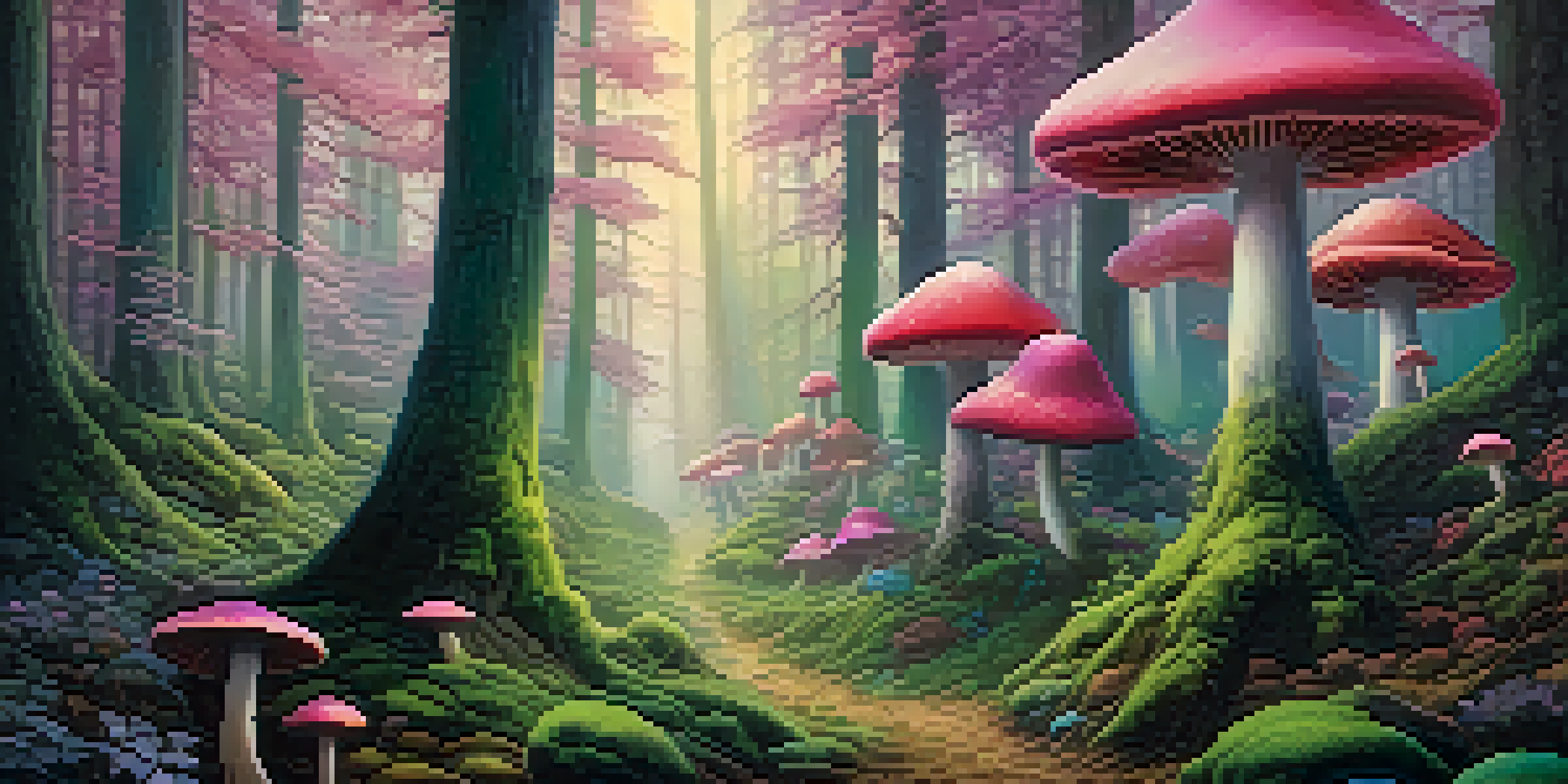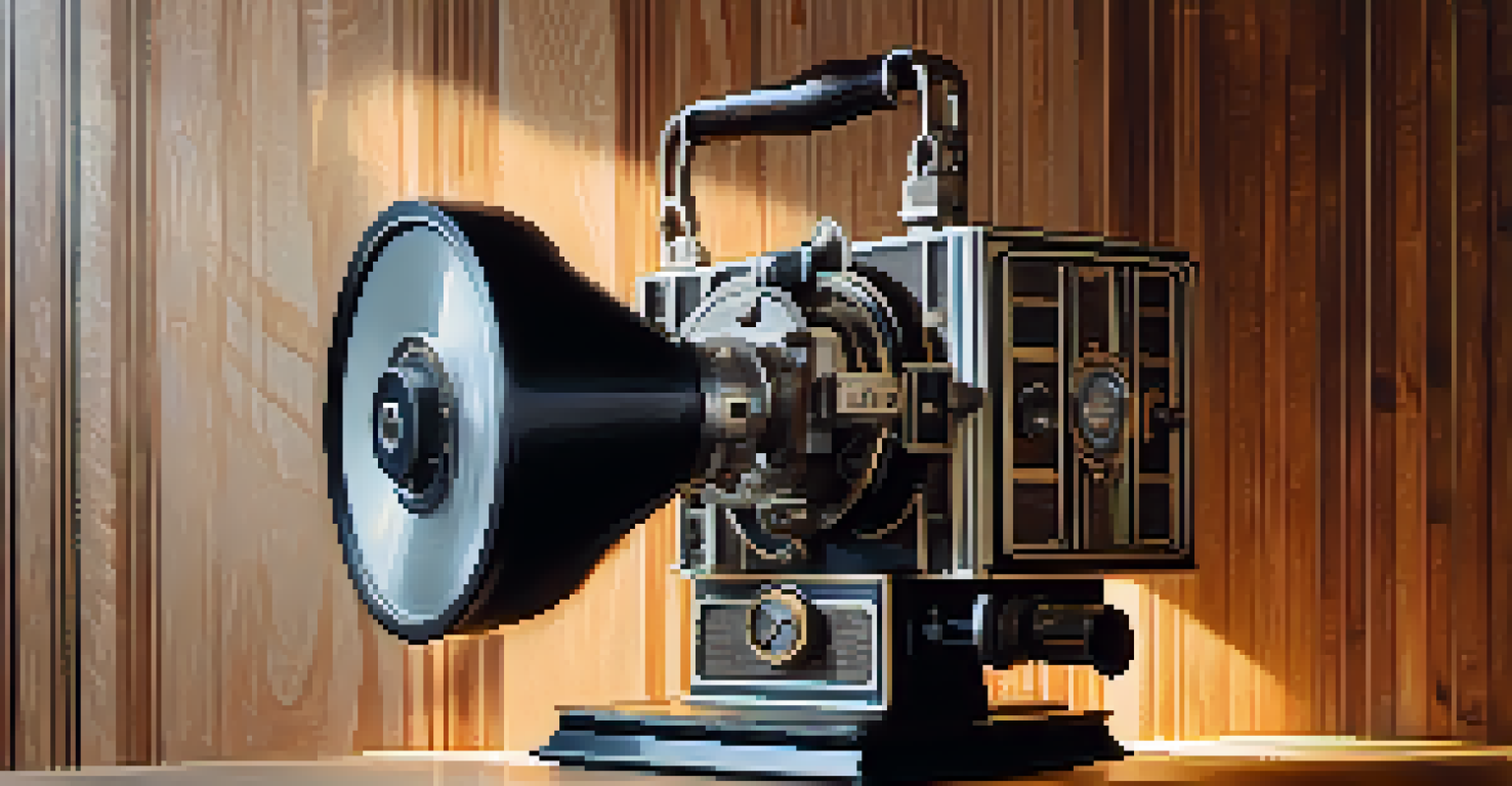Cinematic Techniques Unique to Experimental Films

Defining Experimental Film and Its Purpose
Experimental film is a genre that challenges traditional storytelling. Unlike mainstream cinema, it often prioritizes artistic expression over narrative coherence. This approach allows filmmakers to explore abstract concepts, emotions, and ideas, opening up a dialogue with the audience.
Experimental film is not about the story; it's about the experience.
The purpose of experimental films is not just to entertain but to provoke thought and inspire new perspectives. They invite viewers to question their understanding of film and art, pushing boundaries in ways that conventional films often do not. This creates a rich tapestry of meaning that can be interpreted in many ways.
By breaking the mold, experimental films often reflect the complexities of human experience. They embrace ambiguity and invite audiences to engage on a deeper level, making them a significant part of the cinematic landscape.
Non-Linear Narratives and Their Impact
One of the hallmark techniques of experimental film is the use of non-linear narratives. Unlike traditional films that follow a chronological order, these films may jump through time or present events out of sequence. This creates a unique viewing experience that can mimic the way memories and thoughts flow in our minds.

By disrupting the linear storyline, filmmakers can emphasize emotional truths over factual accuracy. This technique allows for a more immersive experience, as viewers are encouraged to piece together the story themselves. It's like putting together a jigsaw puzzle, where each piece reveals a different facet of the narrative.
Experimental Film Challenges Norms
This genre prioritizes artistic expression over traditional storytelling, encouraging viewers to engage with abstract concepts.
Such narratives can evoke feelings of confusion or curiosity, prompting audiences to reflect on their own interpretations. This engagement can lead to a more personal connection to the film, as viewers find meaning in the chaos.
Innovative Use of Visuals and Aesthetics
Experimental films often prioritize visuals that challenge conventional aesthetics. This can include unusual color palettes, abstract imagery, or striking compositions that defy traditional framing. These visual choices can evoke specific emotions or highlight thematic elements in unexpected ways.
The best experimental films are those that challenge the viewer's perception and invite them into a dialogue.
By utilizing unconventional visuals, filmmakers can create a dreamlike quality that enhances the storytelling experience. For example, extreme close-ups or distorted perspectives can immerse the audience in the character's emotional state, allowing them to feel rather than just observe.
This experimental approach not only captivates viewers but also encourages them to think critically about what they are seeing. It’s a visual dialogue that can express complex ideas without relying on dialogue or traditional narrative structures.
Sound Design as a Narrative Tool
In experimental film, sound design plays a crucial role in shaping the narrative. Filmmakers often utilize unconventional soundscapes, blending ambient noise, stark silence, or even abstract sounds to create a unique auditory experience. This technique can enhance the emotional impact of a scene or convey themes in ways that visuals alone cannot.
For instance, a dissonant soundtrack might heighten feelings of tension or unease, while soothing sounds can evoke tranquility. This manipulation of sound invites the audience to engage with the film on a sensory level, creating an immersive experience that lingers long after the viewing.
Non-Linear Narratives Enhance Engagement
By disrupting chronological storytelling, experimental films allow audiences to experience emotional truths and piece together narratives.
Moreover, the absence of sound can also be just as powerful. Silence can evoke deep reflection, allowing viewers to contemplate the visuals and their meanings without distraction. This thoughtful use of sound and silence is a defining characteristic of many experimental films.
Experimental Editing Techniques
Editing in experimental films often defies traditional continuity rules. Filmmakers may employ jump cuts, rapid editing, or even random splicing to create a disjointed experience. This approach can reflect the fragmented nature of memory or consciousness, encouraging audiences to engage actively with the material.
For example, abrupt transitions can create a jarring effect, prompting viewers to question the relationship between scenes. This technique can also heighten emotional responses, leaving audiences disoriented yet intrigued, much like a roller coaster ride through the filmmaker's mind.
Such editing choices invite viewers to participate in constructing the narrative, fostering a sense of collaboration between the film and its audience. It’s an engaging way to challenge perceptions of time and space within the cinematic experience.
Symbolism and Metaphor in Experimental Films
Symbolism and metaphor are prevalent in experimental films, serving as tools for deeper exploration of themes and ideas. Filmmakers often use visual metaphors to convey complex emotions or societal critiques, allowing audiences to interpret meaning beyond the surface. This invites a more analytical and reflective viewing experience.
For instance, a recurring image or object might symbolize a character's internal struggle or societal issues, prompting viewers to consider its implications. This layered storytelling encourages audiences to engage with the film on multiple levels, making each viewing a unique journey.
Symbolism Invites Deeper Reflection
Through the use of visual metaphors, experimental films encourage viewers to explore complex themes and connect personally with the content.
By employing symbolism, experimental films can resonate on a personal level, connecting with viewers' experiences and emotions. It transforms the viewing experience into an interactive dialogue between the film and its audience.
Audience Interaction and Engagement
Experimental films often seek to engage audiences in interactive ways, breaking the fourth wall or prompting direct involvement. This can manifest through participatory screenings or immersive experiences that encourage viewers to engage with the film beyond passive observation. It’s about creating a shared space for exploration and dialogue.
For example, some films may invite audience members to influence the narrative or experience, blurring the lines between creator and viewer. This participatory approach fosters a sense of community and collaboration, enriching the overall cinematic experience.

In this way, experimental films challenge the traditional dynamics of film consumption, transforming audiences into active participants. This engagement not only enhances the viewing experience but also encourages a deeper connection with the themes presented.